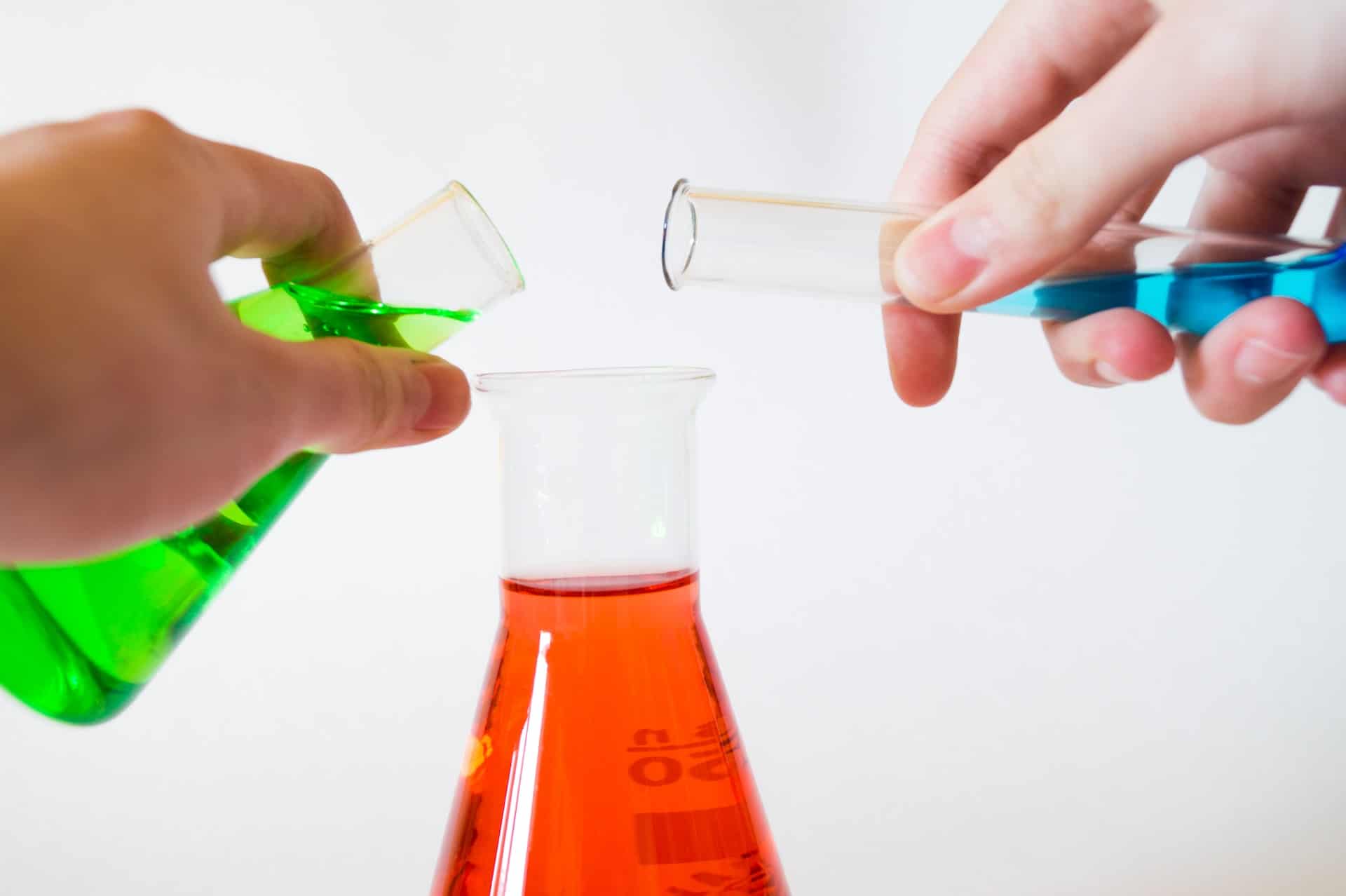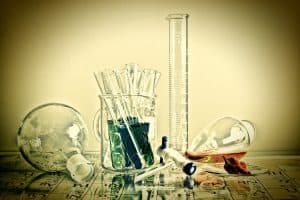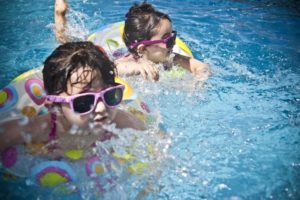
The Best Chemistry Sets for All Ages
February 15, 2023 - Ellie Gabel
Revolutionized is reader-supported. When you buy through links on our site, we may earn an affiliate commission. Learn more here.
Chemistry sets have been nestled inside children’s gift-wrapped boxes for decades. These kits are a great way to teach an early love of science and the chemicals that are all around. However, chemistry sets are also great activities for teenagers, adults and older people. Everyone can gain knowledge, enhance their understanding of the world and have fun with these simple tools and household items. Explore the wonders of the natural world today with the best chemistry set for all ages and experience levels.
Skilled, Specialized and Safe
A chemistry set is essentially an educational tool that allows its students to experiment and take a hands-on approach to science. They are staples of the mid-20th century, but the knowledge of cancerous or radioactive materials was not as well known as today. Children would practice bending glass and risk 3rd-degree burns or work with dangerous materials when measuring ore or cyanide.
Thankfully today, science has progressed so that the creators of these kits understand proper safety precautions for children and interested adults alike. All kits come with safety instructions on equipment or chemicals, safety goggles and gloves and tips on keeping a space ventilated and away from flammable objects.
Along with this improved safety is a variety of brain benefits, such as increasing problem-solving abilities and complex thinking. Not only can the best chemistry set teach someone how to create a tangible reaction, but it can help the student understand how the chemicals reacted together to create this change. Logical thinking is a great skill for any age.
Perhaps most importantly, chemistry sets are a lot of fun. STEM learning is trending, but many older people did not have the same hands-on experiments and dedicated education to the sciences that their children are exploring. Fulfilling the joy of the inner child and picking up new knowledge in the sciences can increase happiness while providing some brain exercises.
What’s Inside a Kit?
The contents of the best chemistry set can differ greatly. Some kits can explain edible science like the rising of a cake and may contain familiar ingredients like measuring spoons and flour. Other kits work in more complex zones with specialized chemicals that need to be bought from a manufacturer, not the local dollar store. Both have their benefits and unique selling points.
A typical set that explores chemical reactions could offer equipment like pipettes, graduated cylinders, dishes, thermometers, beakers, goggles and magnifying glasses. A great kit could include a logbook to monitor chemical reactions and steps in crafting a hypothesis. Charting progress helps the user adapt their ability to take risks and work with trial and error patiently.
When reviewing the materials included, make sure to read the included booklet thoroughly. It will outline safety precautions, what is included inside, and directions on how to conduct experiments. This information is vital to crafting a fun experience while staying safe.
Finding the Best Chemistry Set for You
The best chemistry set can fall into many categories, including crystals, chemicals, hands-on creation and food science. Each category will explore the wonders of the natural world by creating new materials or altering the state of others. In no time, the user will be awestruck at what they can create.
1. Crystal Growth
Excited by the shining, shimmering crystal formation? The 4M Toysmith Crystal Growing Science Experimental Kit allows the student to grow 7 different types of crystals. This is more of a hands-off activity as much of the experiment is done in waiting time. The user will pour the crystal compound over the base and place it inside a dome. Inside its case, the crystal slowly forms its jagged, bejeweled shape.
While crystal kits are also common with families for their extremely safe and slow progress approach, adults can also find joy in the decoration aspect and shimmering glow of creating a crystal.
Other kits have molds shaped like trees where the crystals burst forth like sheaves of leaves. Their intricate and entirely unique design makes for a stellar addition to any living space. Along the way, the user learns about organic crystal growth in caves and tunnels around the globe.
2. Chemical Reactions
Chemical reactions are the standard when buying chemistry sets. There are a wide variety of options for older people that feature more specialized and complex chemicals. Thames + Kosmos Chemistry sets feature 333 experiments that cover everything from compound and combustion to metal oxidation. Explore the relationships between atoms and chemicals with test tubes and beakers.
Furthermore, the Test Tube Chemistry Lab has 50 experiments that cover everyday life. How do cakes rise? Why is the Statue of Liberty green? How do lava lamps even work? This kit answers all these questions and more by providing familiar examples like baking and lava lamps to exemplify the range of chemical reactions in the world.
3. Hands-On Creation
Taking tools into your own hands is a gratifying experience and can help different learners explore these topics. The Happy Atoms Magnetic Molecular modeling kit includes plastic, magnetic tools to allow the user to build 150 molecules. Teaching atomic structure and chemical equations in this tangible way can be like relaxing play while learning an abstract concept.
Microscopes are also always a great way to see hidden parts of our world. The National Geographic microscope science kit uses LED lights to view slides of algae, muscle cells, plants, earthworms, mold, skin, shrimp eggs and more. The world looks so different from this view and can encourage the user to collect more samples to enhance their close look at nature.
4. Food Science
The culinary world is one built on chemical reactions. How a brownie differs from a cake is all down to reactions, for example. With food science kits, users can learn about the complexities of these recipes all while enjoying some edible delights.
The Edible Chemistry Set includes 16 experiments like color-changing foaming jelly and polymer pudding. This type of set is perfect for people interested in science but a little hesitant about using new equipment and chemicals. Fortunately, everything involved in food science is edible and non-toxic. However, be wary of food allergies when crafting these delicious creations.
Preparing the Proper Space
Once the right chemistry set is ordered, take time to set up a safety zone for the experiments to take place. The chosen room should be spacious and well-ventilated so that gases are safely expelled. Additionally, if any chemicals are spilled, the spacious nature of the room will allow the user to take leave and protect the rest of their house. It is also important to keep that workspace clear so that the equipment and tubes of chemicals are stable enough to rest.
Label everything so that no unaccounted-for reactions take place and always wear the correct safety gear. This can include gloves, a lab coat, long pants, closed-toed shoes and often goggles.
Finally, keep 2 trashcans nearby to discard dry and wet waste separately. Creating a trashcan reaction would not be ideal for you or the garbage professionals that load up the neighborhood’s bags. All great scientists are considerate of how their experiments affect others.
Learning and Loving Science
Chemistry sets are not just for children. They teach important skills and engender a lifelong love of learning and digging into new ideas. Outside of these kits, explore new resources or take a class to further this learning even more. The power of experimentation gives the gift of confidence in decision-making and explores the natural relationships between hard sciences and everyday life in baking or green town statues.
Take the time to expand the power of the mind with the best chemistry set for adults today and start a hobby that values happy learning.
Revolutionized is reader-supported. When you buy through links on our site, we may earn an affiliate commission. Learn more here.
Author
Ellie Gabel
Ellie Gabel is a science writer specializing in astronomy and environmental science and is the Associate Editor of Revolutionized. Ellie's love of science stems from reading Richard Dawkins books and her favorite science magazines as a child, where she fell in love with the experiments included in each edition.






